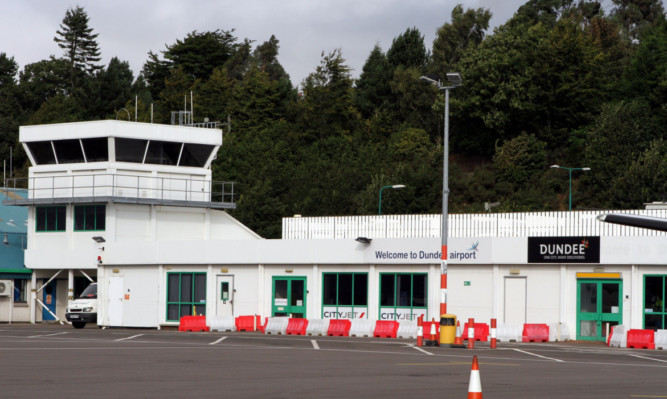The government-owned company responsible for running Dundee Airport fell to a £4.5 million pre-tax loss last year despite picking up subsidies totalling more than £20m.
And the number of passengers flying from the city’s Riverside runway also tumbled, leaving an airport based in Scotland’s fourth city behind tiny island airports like Benbecula and Islay and remote Wick in Caithness.
Of the HIAL group’s 11 airports, only Campbeltown, Tiree and the beach airstrip on Barra handled fewer passengers during the 12 months to March.
The 45% slide in numbers, to 26,774 last year from 48,312 in the previous period, follows a withdrawal of services which began in October 2012 with the end of regular flights linking Dundee to Belfast and Birmingham.
Cityjet services between Dundee and London City were subsequently reduced in frequency before being withdrawn altogether, leaving Dundee City Council and Transport Scotland footing the bill to keep a link to the UK capital on the schedules.
A new route connecting Dundee and London Stansted was set up this spring, and was awarded to Loganair’s FlyBe franchise following the granting of special ‘public service’ dispensation and £2.85m in funding from a UK Government route development fund.
Dundee’s Airport has been described as “vital” to the city’s future by senior council figures, but more than half the respondents to a recent Dundee and Angus Chamber of Commerce study said they did not regard the subsidy-supported service as important to their business.
In its annual report, Highland and Islands Airports Limited managing director Inglis Lyon hailed the overall group’s “record passenger numbers”, with the firm also boasting it had stepped up its investment in the future.
“In many respects, 2013/14 was a particularly successful year for HIAL, with record passenger numbers and a host of new or expanded routes across a number of airports,” Mr Lyon said.
“The period also saw significant investment in new capital projects, future proofing our airports for forecast growth.
“But there were challenges too, not least as some of our airline partners sought to rationalise their business in the face of rising costs, the future of access to the south east remained up in the air, and the impact of air passenger duty continued to be felt across the industry.”
Inverness-based HIAL said almost 70,000 extra passengers used its airports during the year.
Overall, numbers grew by 5.4% to a record 1,367,342 with business at Sumburgh Airport on Shetland rising 32%, Wick climbing 22% on an energy jobs boom, and Kirkwall lifting 8%.
Some £17m of capital investment included £9.5m on essential upgrades at Sumburgh, with £1.4m spent on the runway at Inverness and a further £961,000 on a taxiway extension ahead of a new search and rescue helicopter facility being established there next year.
Four new fire appliances were bought for Stornoway and Benbecula, at a cost of £1m with HIAL drawing on cash reserves to fund the overall loss.
A major Scottish Government scoping report into the future of Dundee Airport, published in December, revealed how more aggressive marketing, detailed market analysis and route development support could see passenger numbers increase up to five-fold.
It proposed links to a major hub like Amsterdam Schipol, and highlighted opportunities created by Dundee’s regeneration efforts, including the V&A, and the prospect of investments in the renewable energy industry.
But the study also advised authorities to assess the likely cost of mothballing the site in the event that efforts to save it should prove in vain.
Dundee remains the group’s busiest base in terms of airport movements, thanks to its adjacent flying school and popularity with private craft.
Overall HIAL turnover rose 9%, to £19.7m, with losses of £4.5m more than three-and-a-half times the previous year’s £1.3m reverse.
Subsidies contributed an additional £21.7m, with revenue support of £14.7m and capital grants of £7m.
